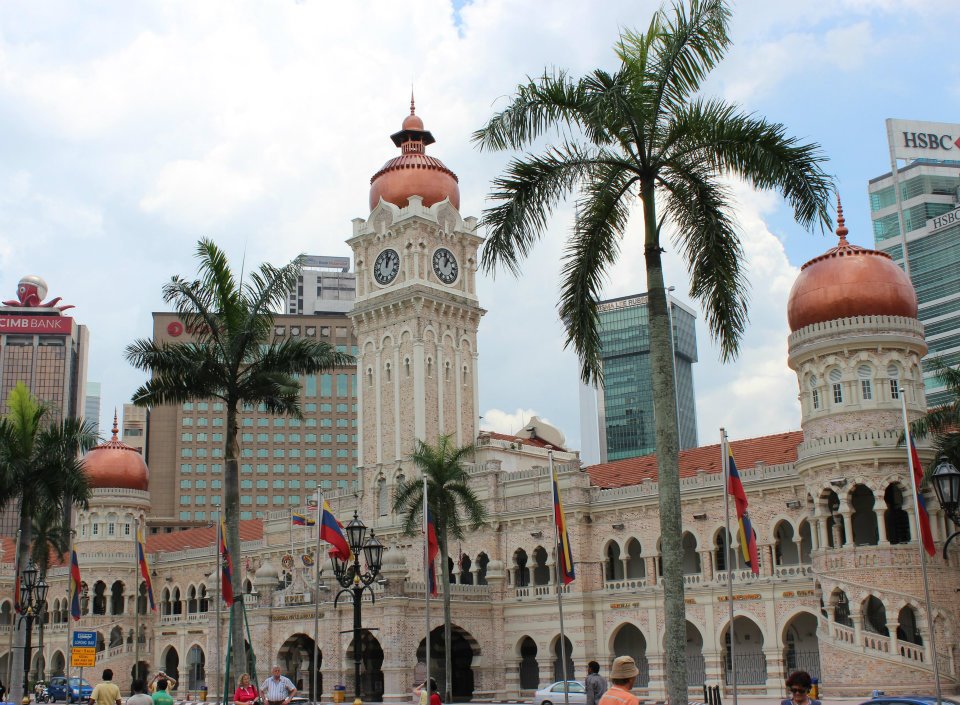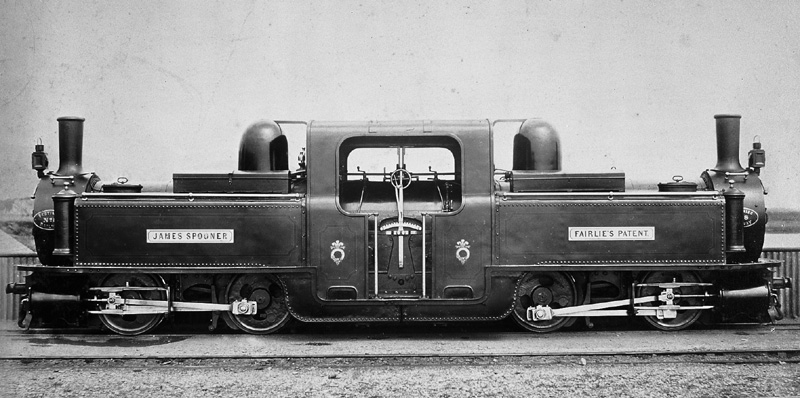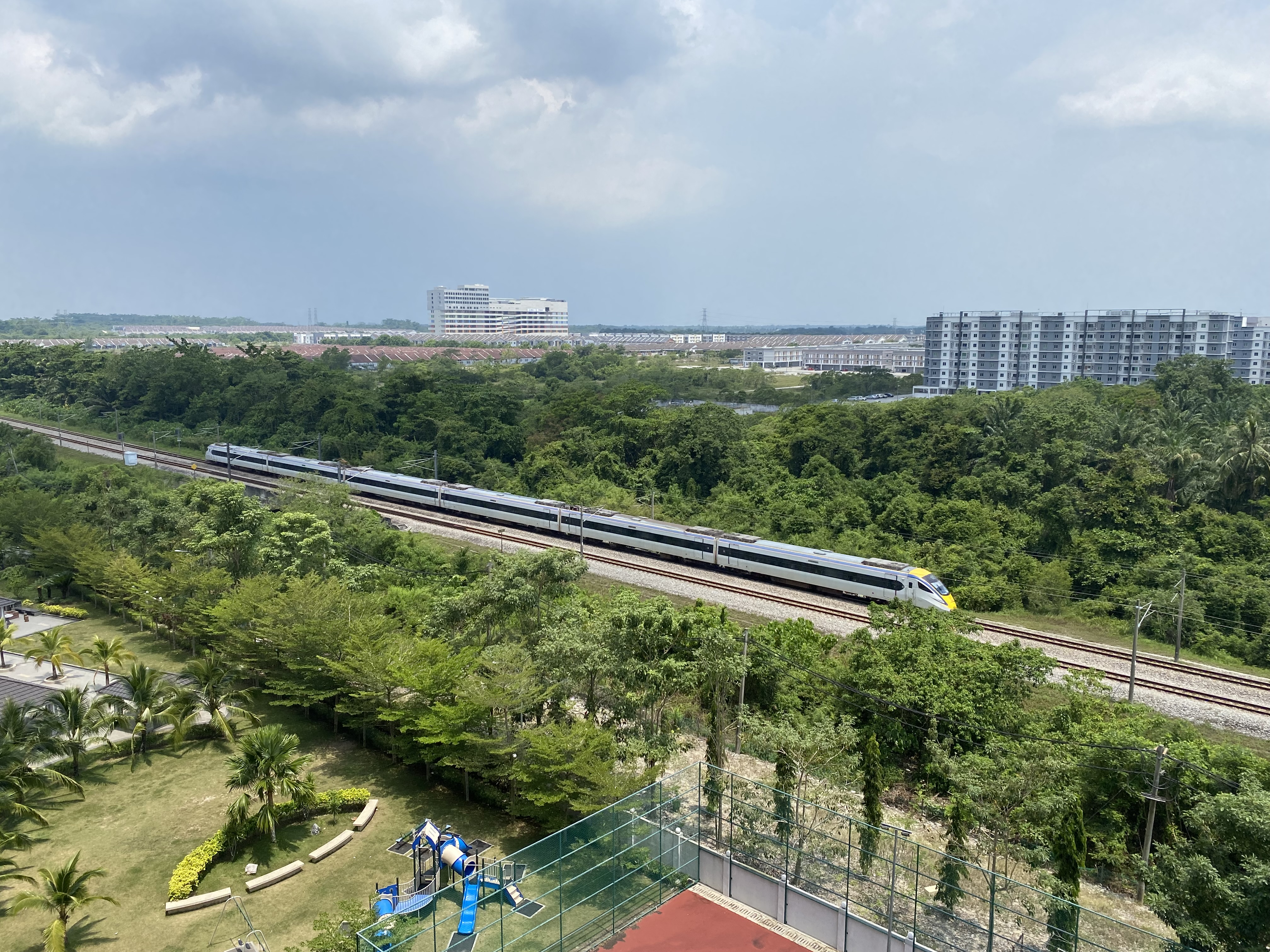|
Charles Edwin Spooner
Charles Edwin Spooner was a British engineer who worked in Malaya. He oversaw the construction of many important buildings in Kuala Lumpur, and he reorganised and expanded the railway system in the Federated Malay States. Early life C. E. Spooner was born on 22 November 1853 at Hafod Tan y Craig, North Wales, the youngest son of Charles Easton Spooner. He received his education in Engineering at Trinity College, Dublin, and became the resident engineer of the North Wales Narrow Gauge Railways from 1874 to 1876 at the time of its construction. Career Spooner joined the Survey Department of Ceylon in 1876, and in the following year moved to the Ceylon Public Works Department where he stayed for 14 years. He was involved in many irrigation schemes and the construction of many important roads and other works in Ceylon. In 1891, he was appointed State Engineer of the Selangor Public Works Department (PWD). During his time at the Selangor PWD, he had a major impact on the arch ... [...More Info...] [...Related Items...] OR: [Wikipedia] [Google] [Baidu] |
Charles Easton Spooner
The Spooners of Porthmadog refers to the Spooner family of Porthmadog, North Wales who made important contributions to the development of narrow gauge railways both locally and throughout the world. James Spooner, together with his sons James Swinton and Charles Easton and other members of their family, constructed and managed the Ffestiniog Railway for over fifty years. In North Wales they were involved in the promotion of numerous railway schemes including many quarry lines, the Talyllyn Railway, the Festiniog and Blaenau Railway, the North Wales Narrow Gauge Railways and the Carnarvonshire Railway. Through publications and overseas family commissions they influenced narrow gauge railway construction in Russia, America and throughout the British Empire. James Spooner ;Dates 1790–1856 Family James Spooner was born at Leigh near Worcester in 1790. He trained as a land surveyor and is believed to have worked as a civilian member of an Ordnance Survey team. He married in 1813 ... [...More Info...] [...Related Items...] OR: [Wikipedia] [Google] [Baidu] |
Kuala Lumpur
, anthem = ''Maju dan Sejahtera'' , image_map = , map_caption = , pushpin_map = Malaysia#Southeast Asia#Asia , pushpin_map_caption = , coordinates = , subdivision_type = Country , subdivision_name = , subdivision_type1 = Administrative areas , subdivision_name1 = , established_title = Establishment , established_date = 1857 , established_title2 = City status , established_date2 = 1 February 1972 , established_title3 = Transferred to federal jurisdiction , established_date3 = 1 February 1974 , government_type = Federal administrationwith local government , governing_body = Kuala Lumpur City Hall , leader_title = Mayor , leader_name = Mahadi bin Che Ngah , total_type = Federal territory , area_footnotes = , area_total_km2 = ... [...More Info...] [...Related Items...] OR: [Wikipedia] [Google] [Baidu] |
Federated Malay States Railways
The Federated Malay States Railways (FMSR) was a consolidated railway operator in British Malaya (present day Peninsular Malaysia and Singapore) during the first half of the 20th century. Named after the then recently formed Federated Malay States in 1896 and founded five years after the formation of the federation, the company acquired various railways that were developed separately in various parts of Malaya, and oversaw the largest expansion and integration of the colonies' rail network encompassing the Federated Malay States, the Unfederated Malay States (except Trengganu) and the Straits Settlements, with lines spanning from Singapore to the south to Padang Besar (near the border with Siam) to the north. History Predecessors Until the formation of the FMSR, Malaya's railway systems were fragmented and concentrated in the commercially active west coast of the peninsula; none of the systems were originally intended for interstate travel, and were founded to fulfill ... [...More Info...] [...Related Items...] OR: [Wikipedia] [Google] [Baidu] |
Malaysian Engineers
Malaysian may refer to: * Something from or related to Malaysia, a country in Southeast Asia * Malaysian Malay, a dialect of Malay language spoken mainly in Malaysia * Malaysian people, people who are identified with the country of Malaysia regardless of their ethnicities. Most Malaysians are of Malay, Chinese and Indian descent. ** Malaysian diaspora, Malaysian emigrants and their descendants around the world * Malaysian cuisine, the food and food culture of Malaysia * Malaysian culture, culture associated with Malaysia * The call sign and colloquial name of Malaysia Airlines See also * Malaysian names, names as used by the Malaysian people * * * Malays (other) * Malaya (other) * Malay (other) Malay may refer to: Languages * Malay language or Bahasa Melayu, a major Austronesian language spoken in Indonesia, Malaysia, Brunei and Singapore ** History of the Malay language, the Malay language from the 4th to the 14th century ** Indonesi ... {{disam ... [...More Info...] [...Related Items...] OR: [Wikipedia] [Google] [Baidu] |
British Civil Engineers
British may refer to: Peoples, culture, and language * British people, nationals or natives of the United Kingdom, British Overseas Territories, and Crown Dependencies. ** Britishness, the British identity and common culture * British English, the English language as spoken and written in the United Kingdom or, more broadly, throughout the British Isles * Celtic Britons, an ancient ethno-linguistic group * Brittonic languages, a branch of the Insular Celtic language family (formerly called British) ** Common Brittonic, an ancient language Other uses *'' Brit(ish)'', a 2018 memoir by Afua Hirsch *People or things associated with: ** Great Britain, an island ** United Kingdom, a sovereign state ** Kingdom of Great Britain (1707–1800) ** United Kingdom of Great Britain and Ireland (1801–1922) See also * Terminology of the British Isles * Alternative names for the British * English (other) * Britannic (other) * British Isles * Brit (other) * Br ... [...More Info...] [...Related Items...] OR: [Wikipedia] [Google] [Baidu] |
Arthur Benison Hubback
Arthur Benison Hubback (13 April 1871 – 8 May 1948) was an English architect and soldier who designed several important buildings in British Malaya, in both Indo-Saracenic architecture and European "Wrenaissance" styles. Major works credited to him include Kuala Lumpur railway station, Ubudiah Mosque, Jamek Mosque, National Textile Museum, Panggung Bandaraya DBKL, Ipoh railway station, and Kowloon railway station. After an English training in Liverpool, he arrived in Malaya in 1895, and by 1900 was appointed chief government architect of the British-run Federated Malay States, returning to Britain in 1914 at the start of World War I, though he did not officially resign until 1917. Reversing the pattern of many British architects of the British Raj in India, he was an architect who became a soldier, commanding troops in France, and remaining in the army until his retirement in 1924. He was active in sports, especially football and cricket. Hubback was promoted to brigadie ... [...More Info...] [...Related Items...] OR: [Wikipedia] [Google] [Baidu] |
Islamic Architecture
Islamic architecture comprises the architectural styles of buildings associated with Islam. It encompasses both secular and religious styles from the early history of Islam to the present day. The Islamic world encompasses a wide geographic area historically ranging from western Africa and Europe to eastern Asia. Certain commonalities are shared by Islamic architectural styles across all these regions, but over time different regions developed their own styles according to local materials and techniques, local dynasties and patrons, different regional centers of artistic production, and sometimes different religious affiliations. Early Islamic architecture was influenced by Roman, Byzantine, Iranian, and Mesopotamian architecture and all other lands which the Early Muslim conquests conquered in the seventh and eighth centuries.: "As the Arabs did not have an architectural tradition suited to the needs of a great empire, they adopted the building methods of the defeated S ... [...More Info...] [...Related Items...] OR: [Wikipedia] [Google] [Baidu] |
Moorish Revival Architecture
Moorish Revival or Neo-Moorish is one of the exotic revival architectural styles that were adopted by architects of Europe and the Americas in the wake of Romanticist Orientalism. It reached the height of its popularity after the mid-19th century, part of a widening vocabulary of articulated decorative ornament drawn from historical sources beyond familiar classical and Gothic modes. Neo-Moorish architecture drew on elements from classic Moorish architecture and, as a result, from the wider Islamic architecture. In Europe The "Moorish" garden structures built at Sheringham Hall, Norfolk, ca. 1812, were an unusual touch at the time, a parallel to chinoiserie, as a dream vision of fanciful whimsy, not meant to be taken seriously; however, as early as 1826, Edward Blore used Islamic arches, domes of various size and shapes and other details of Near Eastern Islamic architecture to great effect in his design for Alupka Palace in Crimea, a cultural setting that had already ... [...More Info...] [...Related Items...] OR: [Wikipedia] [Google] [Baidu] |
Indo-Saracenic Revival Architecture
Indo-Saracenic architecture (also known as Indo-Gothic, Mughal-Gothic, Neo-Mughal, or Hindoo style) was a revivalist architectural style mostly used by British architects in India in the later 19th century, especially in public and government buildings in the British Raj, and the palaces of rulers of the princely states. It drew stylistic and decorative elements from native Indo-Islamic architecture, especially Mughal architecture, which the British regarded as the classic Indian style, and, less often, from Hindu temple architecture. The basic layout and structure of the buildings tended to be close to that used in contemporary buildings in other revivalist styles, such as Gothic revival and Neo-Classical, with specific Indian features and decoration added. The style drew from western exposure to depictions of Indian buildings from about 1795, such as those by William Hodges and the Daniell duo ( William Daniell and his uncle Thomas Daniell). The first Indo-Saracenic ... [...More Info...] [...Related Items...] OR: [Wikipedia] [Google] [Baidu] |
Order Of St Michael And St George
The Most Distinguished Order of Saint Michael and Saint George is a British order of chivalry founded on 28 April 1818 by George IV, Prince of Wales, while he was acting as prince regent for his father, King George III. It is named in honour of two military saints, Michael and George. The Order of St Michael and St George was originally awarded to those holding commands or high position in the Mediterranean territories acquired in the Napoleonic Wars, and was subsequently extended to holders of similar office or position in other territories of the British Empire. It is at present awarded to men and women who hold high office or who render extraordinary or important non-military service to the United Kingdom in a foreign country, and can also be conferred for important or loyal service in relation to foreign and Commonwealth affairs. Description The Order includes three classes. It is used to honour individuals who have rendered important services in relation to C ... [...More Info...] [...Related Items...] OR: [Wikipedia] [Google] [Baidu] |
KTM West Coast Line
The West Coast railway line runs from Padang Besar railway station close to the Malaysia–Thailand border in Perlis (where it connects with the State Railway of Thailand) to Woodlands Train Checkpoint in Singapore. It is called the West Coast railway line because it serves the West Coast states of Peninsular Malaysia. The 1,151-kilometre line is busier than the East Coast railway line because the West Coast railway line handles a variety of passenger train services such as the KTM ETS services, the KTM Intercity services, the International Express, the KTM Komuter in the Klang Valley and Greater Penang, and freight trains. Of this total length, 759 km is double-tracked and electrified. The major stations on the line include KL Sentral in Kuala Lumpur, Butterworth in Butterworth, Penang and JB Sentral in the south in Johor Bahru. History The West Coast railway line was developed in stretches on June 1, 1885, with the opening of the Taiping–Port Weld Line, and 19 ... [...More Info...] [...Related Items...] OR: [Wikipedia] [Google] [Baidu] |


_04.jpg)

.jpg)


